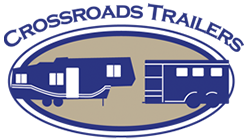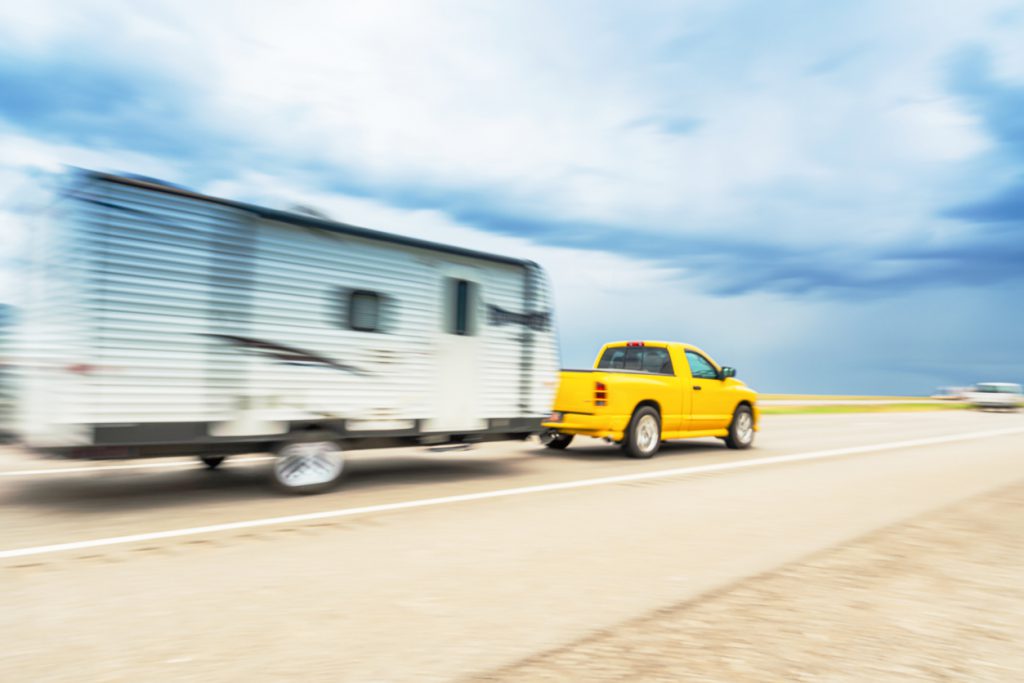You’ve got your bags packed. Coolers filled to the brim. You’ve made sure the kids have used the bathroom one last time before you head out on another RV adventure. You’re a weekend warrior. An explorer who can’t get enough of the crisp, fresh air and long hikes and bike rides.
Towing a trailer takes a serious amount of attention to detail. Sure, all of these new trucks come with endless bells and whistles, and they’re really comfortable, but their true talent is their ability to haul tons of weight behind them. There is a proper way to do so, and learning the correct way to tow is often an afterthought. Below is a list of our own tips to tow like a pro.
Check your tire pressure before you head out.
Having a low tire or two can cause quite a few problems. In general, if all tires are under the proper amount of pressure, you won’t have to worry about constantly fighting the steering wheel to keep towing straight. In other words, your truck won’t pull to the left or right. Having a low tire can also cause a blowout and an unexpected trip to the shop. Be sure to check this step off the list. Otherwise you’ll be saying, “If only I had checked my tire pressure…” Most tires have the correct PSI engraved on them. If not, check with your local dealer or maintenance shop.
Ensure proper tongue weight.
This weight is measured where the tongue and hitch connect. To maintain the right amount of stability, tongue weight should be kept between 10-15% of the trailer’s total weight.
Check the brakes before you pull out.
It may seem tedious, but brakes wear and rot easily, especially if you’ve kept your trailer stationary all season long. Make sure each brake still has enough pad left for you to reach your destination. It also might do you well to take a short test drive and make sure your trailer or truck doesn’t shake. You could need new rotors, too.
Check all batteries and lights.
If you are hauling your trailer, this is a really important step to ensuring a successful trip. It’s crucial to confirm your brake lights work on your trailer. If they don’t, someone who is following you won’t know when to brake and could cause an accident. Making sure all batteries and lights are functioning is a step you can take weeks before your trip, so it’s one less thing you’ll need to do while you’re worried about packing, food lists, etc. Batteries are also important to check, especially if your destination has no hookups.
Maintain your bearings.
It’s best to pack them with the best synthetic wheel-bearing grease you can find and do it at least once a year. This is something that probably slips your mind because you’re worried about the oil level, tire pressure, and brakes. But, forgetting to grease these can make your trip crumble to pieces in no time. This is also something you can mark off the to-do list weeks in advance.
Safety chains.
Crossing the safety chains side-to-side in an X pattern will help make the trailer more securely attached to the hitch. These are sort of a safety net in case your trailer comes loose from the truck. It’s unlikely to happen, but it’s a simple step you can take to be safer. They’re only meant to hold everything together long enough for you to stop, so keep a close eye on your trailer as you drive. When attaching, be sure you allow enough slack for turning.
Practice driving your trailer before a long trip.
Learning how to drive with a trailer attached behind you comes with practice and time, but it’s similar to learning the rules of a stick shift: you’re unlikely to forget how once you learn. Practice using the correct angles to turn and work on driving in and out of gas stations, because these are usually tight places.
Combat trailer sway.
This ties into checking your tire pressure in that you can help eliminate trailer sway by making sure all tires are at the same PSI. Distribute the weight, don’t drive too fast or if the wind is too high, purchase a quality sway controller, and using the manual trailer brake controller are all effective ways in reducing trailer sway. If your trailer does start to get a bit crazy, remember to not counter-steer, as this will cause you to lose control. Slow down or step on the gas for a short second and let the trailer work itself out. Don’t fight it!
Turning your trailer.
One of the most important things to consider when turning a trailer is the trailer sway you’ll almost inevitably face. Go into your turn more than you would in a car. Hopefully, you’ve tightened your hitch enough to where you won’t get much sway, and if it’s too tight, you won’t be able to turn smoothly. It’s something you’ll have to get out there and do before you fully understand it.
Backing up the trailer.
Backing up your trailer won’t be as easy as learning how to turn with it, but it’s like learning how to ride a bike. Learning how to back up a trailer will take practice, but will pay off, and you won’t forget how it’s done. A great trick – put your hand on the bottom of the steering wheel. Whichever way your hand goes is the way the butt of the trailer will go. Having someone help you back up is another great tip, but just make sure you’re able to see them at ALL times. Now, get out there in an open field, put up some cones and practice!


